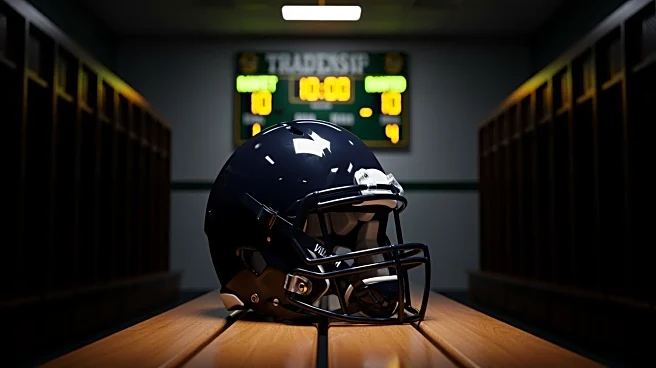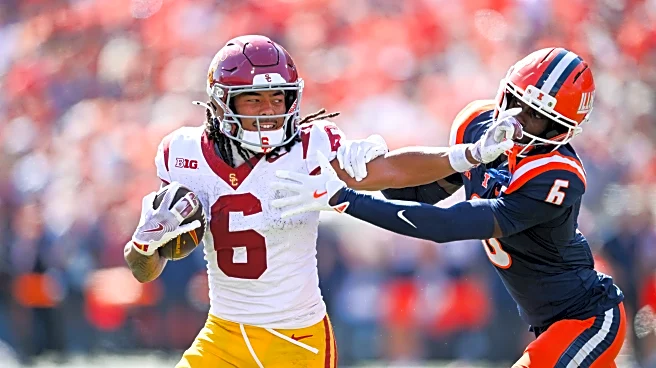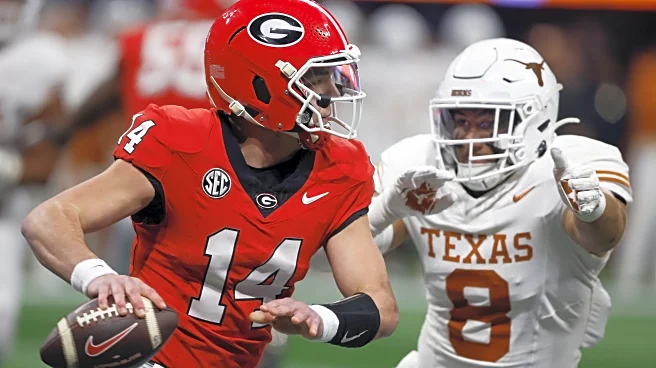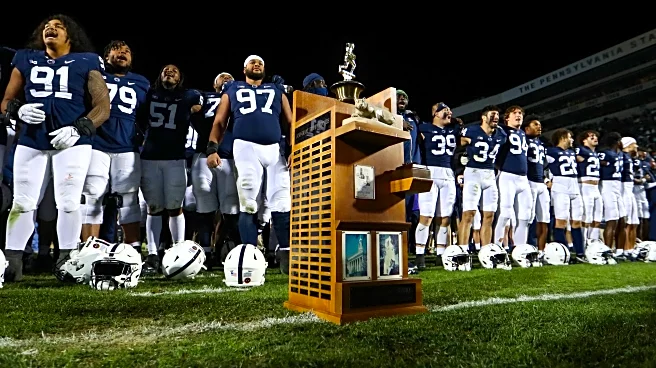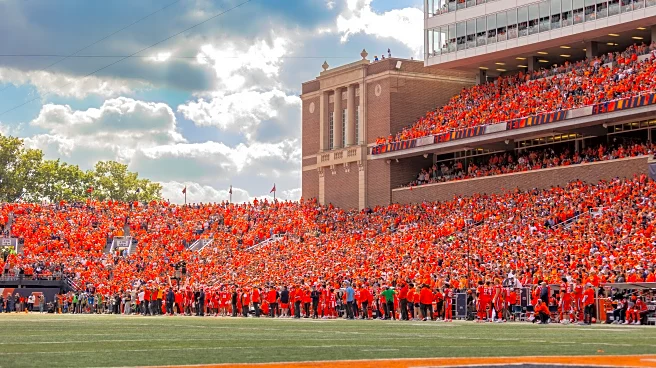What's Happening?
Eli Heidenreich, a wide receiver for the Navy Midshipmen, set a new career receiving yards record during a game against South Florida. Heidenreich caught five passes for 146 yards, surpassing the previous
record held by Rob Thompson. The game, held in Annapolis, Maryland, saw Navy defeat South Florida 41-38. Quarterback Braxton Woodson contributed significantly by running for 103 yards and scoring two touchdowns in the fourth quarter. Alex Tecza also played a crucial role, rushing for 126 yards and scoring a touchdown. Navy's victory gives them a half-game lead in the American Athletic Conference, while South Florida's loss impacts their chances of reaching the conference championship.
Why It's Important?
Heidenreich's achievement highlights his significant contribution to Navy's football program, setting a new benchmark for future players. The victory strengthens Navy's position in the American Athletic Conference, potentially influencing their postseason opportunities. For South Florida, the loss is a setback in their pursuit of a conference championship, affecting their ranking and morale. The game underscores the competitive nature of college football and the impact individual performances can have on team success.
What's Next?
Navy will aim to maintain their lead in the conference and secure a spot in the championship game. South Florida will need to regroup and strategize to improve their standing in upcoming matches. Both teams will focus on leveraging their strengths and addressing weaknesses as the season progresses. The outcome of future games will be crucial in determining their postseason fate.
Beyond the Headlines
Heidenreich's record-setting performance may inspire other players and contribute to the legacy of Navy's football program. The game also reflects the dynamic and unpredictable nature of college sports, where individual achievements can significantly impact team outcomes. The strategic decisions made by coaches and players during such high-stakes games can have long-term implications for their careers and the institutions they represent.




